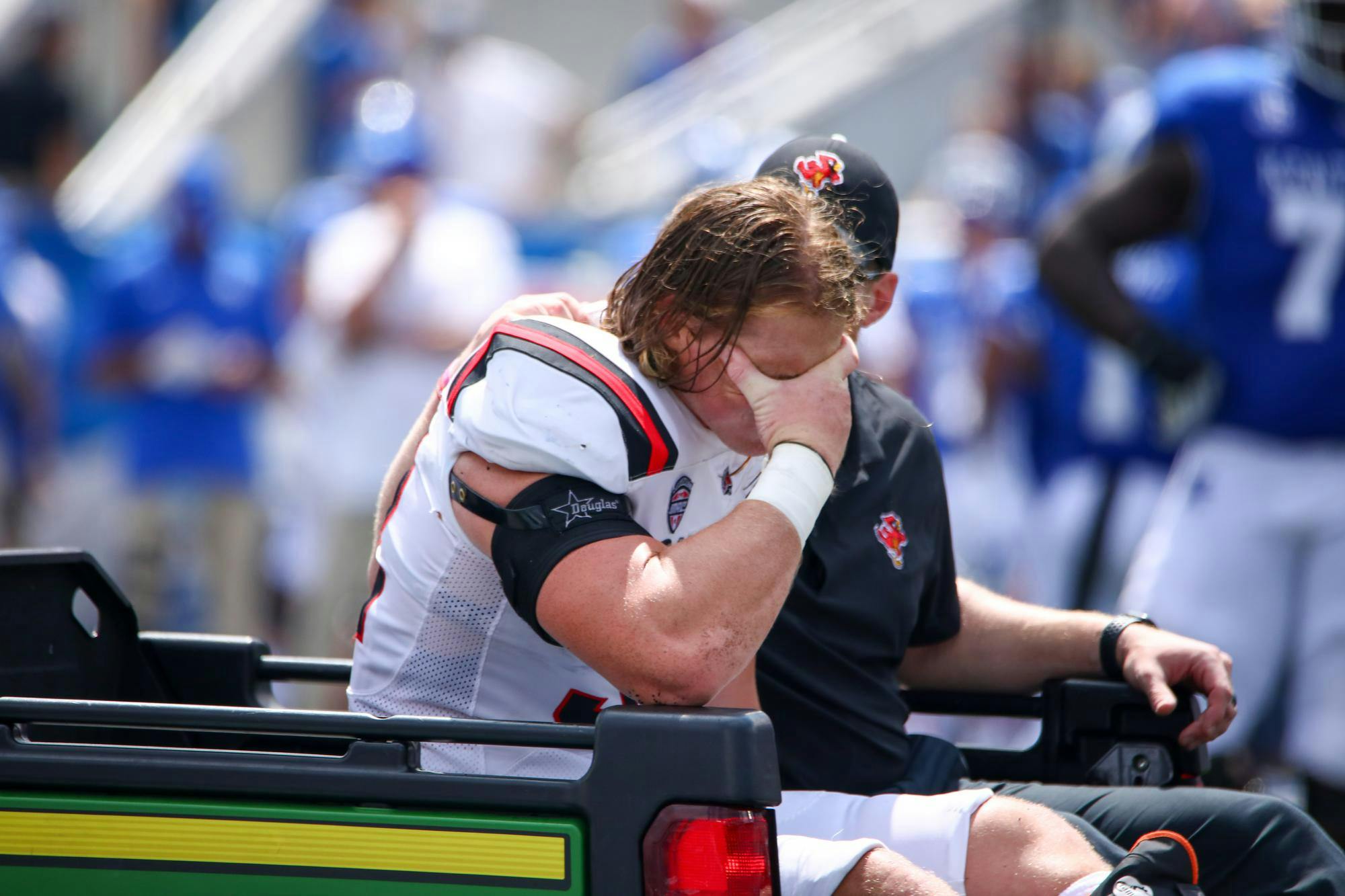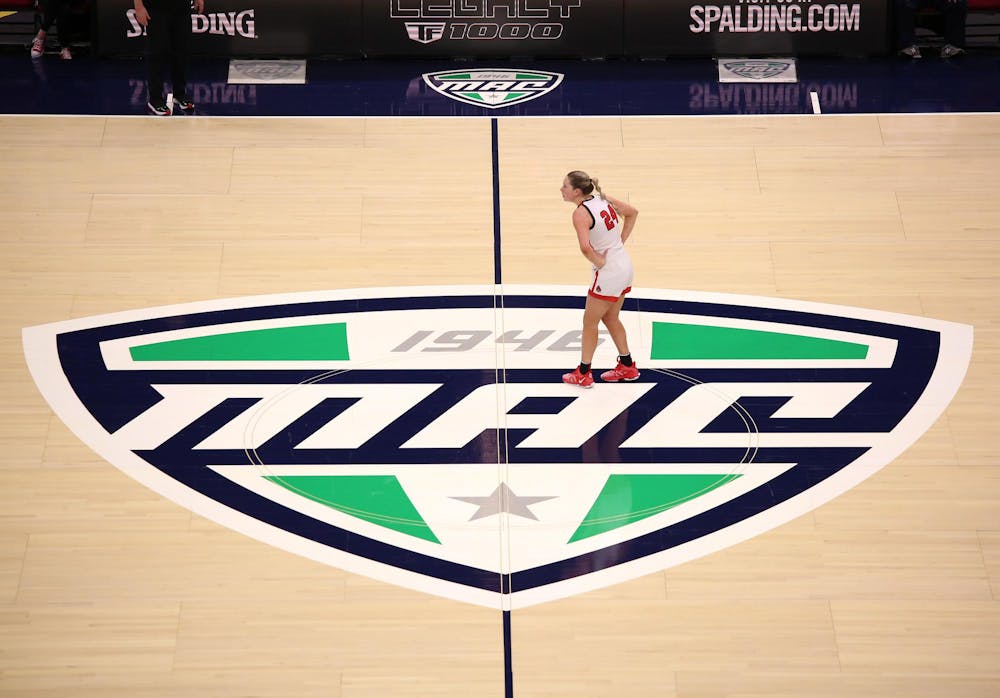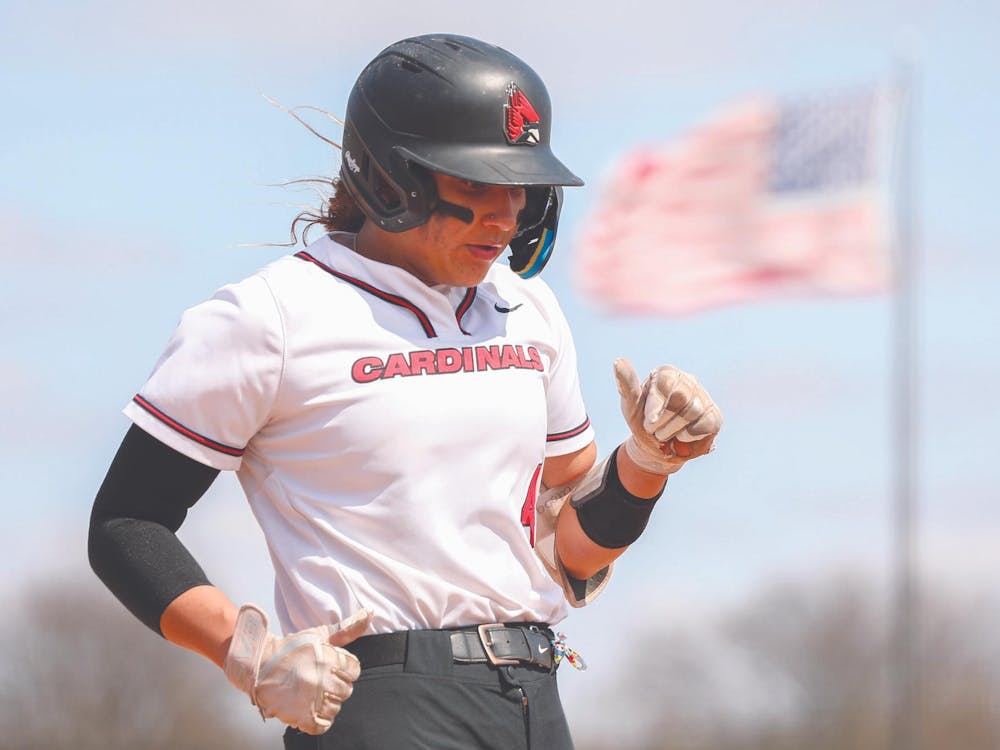Every year during the Mid-American Conference Tournament (MAC), league commissioner Jon Steinbrecher holds a press conference. This year was no different as the 15-year commander-in-chief sat down in front of the media to answer questions.
Below are my thoughts and takeaways from the session.
Ball State and Toledo ended with 25-plus win seasons, but will most likely not make the NCAA Tournament
About 45 minutes before Steinbrecher sat in the middle chair, Ball State women’s basketball head coach Brady Sallee occupied the seat and answered a question about his team's chances of making the NCAA Tournament.
This came after the No. 2 Cardinals fell 65-50 to No. 3 Kent State, the 13-year head Cardinals’ coach did not hold back. He gave his honest opinion about how he feels MAC teams have a chip on their shoulder and don’t get the opportunities they deserve.
Yet to Steinbrecher, playing teams like Uconn and picking up a win over Georgia wasn’t enough for the white and red.
“We need to continue to recommit to right size scheduling,” he said. “Top teams have got to challenge themselves and we gotta win some of those games. Our bottom teams and middle-tier teams make schedules appropriate to them.

“We got to win more non-conference games. We simply do. And then we'll continue to see where the chips fall on that.”
I understand the take on playing harder schedules. I also get the non-conference statement, in which the MAC finished the season with a 72-73 non-MAC record. But as I alluded to, Ball State played better competition and performed well in non-conference games (12-3).
Yet this isn’t just an issue for the Cardinals. Toledo – the No. 1 team in the conference – played teams like Duke and defeated non-MAC opponents like North Dakota State. They even routed the Michigan Wolverines 69-46 when they visited Toledo, Ohio. Their semi-final MAC Tournament loss to Buffalo was the Rockets’ first loss outside of the net 100 this season.
If the win over Michigan and Georgia do not matter to the Rockets or the Cardinals, why play those games?
One thing Steinbrecher highlighted was valid. The game has changed with how net rankings are viewed. While I understand it’s complicated, and change can’t happen overnight, isn’t it the MAC’s job to search for new opportunities?
The MAC and Name, Image, and Likeness (NIL)
It’s no secret NIL has changed the landscape of college athletics the last few seasons. For the MAC, it's a conference that has lost multiple athletes to bigger universities due to the new system and better opportunities.
“It’s certainly an interesting animal that has gone in directions that I'm not sure anybody could have completely anticipated,” Steinbrecher said. “In too many instances, it’s pay for play. And that's not the intent of it.”
I understand his gripe because I, too, believe the system is not used the way it was imagined. It’s also no secret people in college sports across the country have issues with it. From former Alabama football head coach Nick Saban to Ball State men’s basketball head coach Michael Lewis, they believe it is regulated incorrectly.
“[I’ve gone] to Capitol Hill, I think four times in the past 12 months, to talk to Congress about [NIL],” Steinbecher said. “They're all interested. They all know about it, but they're searching for answers, and we've probably not given them the answers they necessarily need.”
Yet, the question I had was about the MAC. How has the conference handled the change and have schools found ways to keep athletes from venturing into the transfer portal?
“I think our schools are trying to manage and build in that area as best they can. But clearly, we don't have the resources that Big Ten schools offer,” he said. “So why does a young woman or young man come to a Mid-American Conference institution?
“To get an education that in many cases is at world-class institutions, to play for exceptional coaches and, in many cases, storied and historic programs. [And] To not have to travel all over God's green earth to play a game. And to come to a place where we think we continue to believe we're the model of intercollegiate athletics.”
That sounds great.
Hell, I chose to come to Ball State partially due to costs and travel. So did some of my family members before me. However, wasn’t ‘the model of intercollegiate athletics’ something of the past due to NIL? What is the conference doing for the future?
Even though there was not much allusion to the new age of college sports, at least the MAC cares about education.
"We had a President's meeting at 6 p.m. last night on some issues, and you'd be amazed at the amount of time we spent talking about things like where our values aligned and what we are providing for the student-athletes,” Steinbrecher said. “What is it we're trying to do? We spend a lot of time talking about that and then ultimately judging ourselves on whether we live up to it or not.”
While he discussed the topic of NIL, Steinbrecher was asked about a revenue-sharing system, much like the idea Dartmouth men’s basketball is attempting to do.
“Time will tell and we'll see where that all goes. It's interesting [because] last fall, I went to our counselor and student-athletes – we're probably one of the few conferences where our student-athletes are part of our governance system,” he said. “One time I said, ‘I want you to contemplate the issue of employment for student-athletes. I don't want to tell you why. You tell me. You think it's a good thing. You think it's not a good thing, we'll give you whatever resources to research whatever.’
He added that in about one to two weeks, the MAC will have the process completed.
How does playing Georgia and Kentucky benefit Ball State besides money?
I have to give some credit to my colleague and co-sports editor Kyle Smedley with this one. While we were at dinner earlier in the week, he brought up the fact that Ball State suffered many injuries in their two 2023 matchups with the Bulldogs and Wildcats.
To the commissioner, there is no difference between playing the No. 1 team in the United States versus a mid-major opponent.
“We're going to play high-level non-conference FBS opponents,” Steinbrecher said. “I don't believe our injury rate in those games is higher than it is in conference games. You gotta be wise in how you schedule, right?”
Injuries like graduate student linebacker and Clayton Coll – who missed the entire season – redshirt sophomore RB Vaughn Pemberton – who missed half of the campaign – happened during the matchup with Kentucky. Look, I’m not saying MAC teams need to stop playing bigger opponents or get scared of getting certain players injured. It’s football; someone will get hurt.

Here is what bothers me. Steinbrecher talked about playing harder opponents, which makes sense due to how rankings work in sports like football and basketball. I also get that those two sports are very, very different when it comes to injuries and other details.
Yet, he said league teams need to schedule ranked opponents for football and basketball. Assignment understood.
About 12 questions later, he blamed injury numbers on teams who schedule tougher opponents.
“You only want to play so many of those, you hopefully can space well,” he said. “...I don't necessarily want to always play Alabama. Maybe there's somebody lower down on the pecking order and whatever conferences we can play… If we want to play in the College Football Playoff (CFP), we're gonna have to beat some of those cats.”
It checks out. According to mcubed.net, the Southeastern Conference (SEC) is 108-13 against the MAC. The same site said the Big Ten is 318-56-2. So while the statement makes sense now with the new playoff system, the statement doesn’t make much sense as the MAC representative in the past who danced with a bigger conference opponent took the bus home with a loss.
So while this may seem I disagree with the commissioner – some things I do and some things I don’t – I understand one man can’t make change or even do it at a quick rate. It’s up to the NCAA and everyone involved with college athletics.
Contact Zach Carter with comments at zachary.carter@bsu.edu or on X @ZachCarter85.





